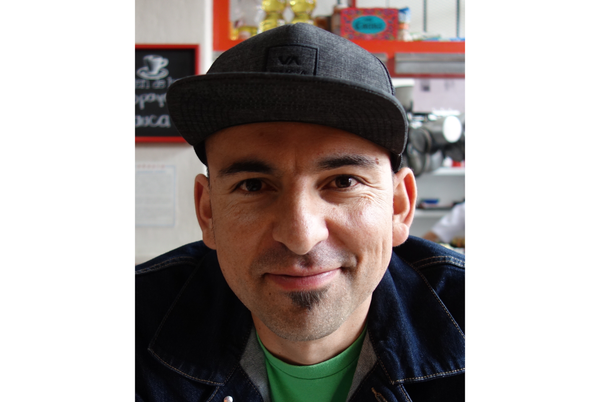This article was published in Scientific American’s former blog network and reflects the views of the author, not necessarily those of Scientific American
On today’s episode of our podcast My Favorite Theorem, Kevin Knudson and I had the pleasure of talking with Federico Ardila. He is a math professor at San Francisco State University and the Universidad de los Andes in Colombia. You can listen to the episode here or at kpknudson.com.
Dr. Ardila decided to focus on a mathematical object called the matroid polytope instead of any particular theorem. The notion of a matroid started in the 1930s with work of Hassler Whitney, George Birkhoff, and Saunders MacLane. Today, matroids are used in many different fields in math, including combinatorics, graph theory, geometry, network theory, optimization, and coding theory, and each field has its own way of approaching the same object, or its own preferred outfits to put on the matroid, as we put it on the podcast. But at its root, a matroid is a set and a collection of subsets of the set that indicate relationships between the elements. If you’re familiar with the idea of linear dependence and independence in linear algebra, a matroid is a generalization of that idea. To dig into the nitty gritty details, you can check out Dr. Ardila’s matroid theory class, which is available for free online.
On supporting science journalism
If you're enjoying this article, consider supporting our award-winning journalism by subscribing. By purchasing a subscription you are helping to ensure the future of impactful stories about the discoveries and ideas shaping our world today.
The word polytope in matroid polytope refers to the generalization of a polygon in two dimensions or polyhedron in three dimensions. A polygon is a set of vertices and edges in a two-dimensional space; a polyhedron is a set of vertices, edges, and faces in three-dimensional space. A polytope, then, is a set of vertices, edges, faces, and higher-dimensional objects that connect up to form a shape in higher-dimensional space. The matroid polytope is a way of putting the information in a matroid into a polytope, perhaps in some enormous dimension. To make sure we did indeed mention a theorem on the show, Dr. Ardila told us about a paper by Gelfand, Goresky, MacPherson, and Serganova (pdf) characterizing matroid polytopes as sub-polytopes of the cube (once again, perhaps a high-dimensional cube) and connects matroid theory to other high-powered branches of math.
In each episode, we ask our guest to pair their theorem with something—food, beverage, art, music, or any other delight in life. Dr. Ardila is a DJ as well as a mathematician, and he chose a musical pairing for matroids. Specifically, he chose the song “Quítalo de Rincón” by Carlos Embales, a Cuban musician. Embales’ recording is not available in its entirety online, but you can listen to part of it here and another version on YouTube. You’ll have to listen to the episode to hear Dr. Ardila talk about why he chose this pairing.
You can find Dr. Ardila online at his website, Twitter, YouTube channel, and Instagram and learn about the DJ collective he is a part of, La Pelanga, at their website. He recently wrote about cultivating diversity in combinatorics for the Notices of the American Mathematical Society (pdf), and Erica Klarreich profiled him for Quanta Magazine.
You can find more information about the mathematicians and theorems featured in this podcast, along with other delightful mathematical treats, at kpknudson.com and here at Roots of Unity. A transcript is available here. You can subscribe to and review the podcast on iTunes and other podcast delivery systems. We love to hear from our listeners, so please drop us a line at myfavoritetheorem@gmail.com. Kevin Knudson’s handle on Twitter is @niveknosdunk, and mine is @evelynjlamb. The show itself also has a Twitter feed: @myfavethm and a Facebook page. Join us next time to learn another fascinating piece of mathematics.
Previously on My Favorite Theorem:
Episode 0: Your hosts' favorite theorems Episode 1: Amie Wilkinson’s favorite theorem Episode 2: Dave Richeson's favorite theorem Episode 3: Emille Davie Lawrence's favorite theorem Episode 4: Jordan Ellenberg's favorite theorem Episode 5: Dusa McDuff's favorite theorem Episode 6: Eriko Hironaka's favorite theorem Episode 7: Henry Fowler's favorite theorem Episode 8: Justin Curry's favorite theorem Episode 9: Ami Radunskaya's favorite theorem Episode 10: Mohamed Omar's favorite theorem Episode 11: Jeanne Clelland's favorite theorem Episode 12: Candice Price's favorite theorem Episode 13: Patrick Honner's favorite theorem Episode 14: Laura Taalman's favorite theorem
